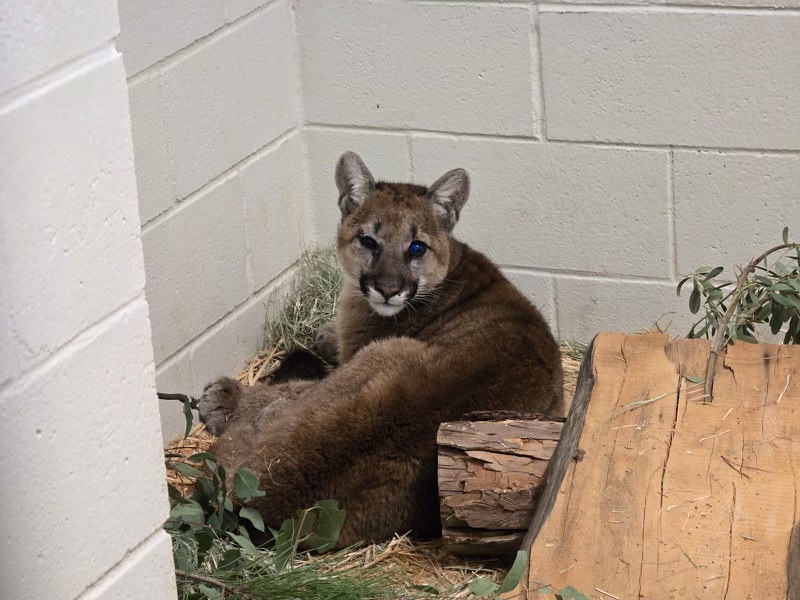A mountain lion cub left with a skull fracture and severe head and eye trauma after being struck by a car in Orange County earlier this year has made a sharp recovery and could soon return to the wild, the San Diego Humane Society announced on Saturday, Apr. 5.
The male cub was roughly four months old when he was found on the side of an Orange County road around Jan. 10. The location was not available on Sunday.
He was treated by the Serrano Animal & Bird Hospital in Lake Forest, and then transferred a few days later to the San Diego Humane Society’s Wildlife Center in Ramona for specialized rehabilitative care.
The 13-acre center is one of two facilities in California equipped with the proper medical tools and enclosures to rehabilitate mountain lions.
The organization said the young cub underwent intensive treatment, including nutritional support and pain management, after he suffered a skull fracture, along with head and eye trauma, and exhibited lameness in his left hind leg.
He did not undergo any surgeries, as his injuries were healing well when he was examined towards the end of January, officials said.

After his condition improved, the cub transitioned to an outdoor enclosure where he could safely regain his strength while minimizing human interaction.
The area is in a secluded part of the campus where human noise can be minimized, said Angela Hernandez-Cusick, a wildlife rehabilitation supervisor with Project Wildlife, a Humane Society program. External shade and temporary walls also provide a visual barrier and limit the number of times the cub sees staff.
Human interaction is limited during feeding times, as well, and staff members do not directly interact with the mountain lion.
Instead, the animal is fed through a center divider in the enclosure, which can be closed or opened on one side.
The cub is fed every few days instead of daily, to prepare him for the type of “wild diet” he would encounter as a hunter once he is released.
His diet consists of proteins he would normally be exposed to in the wild, including quail, rabbits, rats, and venison, Hernandez-Cusick said.
Now — 80 days later — the cub has begun to exhibit natural survival behaviors, including hunting for food and avoiding the presence of humans. He will be considered for release back into the wild once he gains additional weight and staff members have ensured he’s able to hunt and fend for himself long-term.
The mountain lion weighed 44 pounds when the center first received him and is now around 50 to 60 pounds.
“Mountain lions are hit by cars quite often, unfortunately, due to habitat fragmentation,” Hernandez-Cusick said.
A 2023 report by the UC Davis Road Ecology Center revealed one to two mountain lions died on California state highways every week from 2015 to 2022.
Deaths involving vehicle collisions are believed to be under-reported and considered a threat to mountain lion populations in Southern California. As the threat of local extinction has continued to rise, researchers identified other local highways as particularly dangerous for mountain lions, including Ortega Highway in Orange and Riverside counties and the 241 Toll Road in Orange County.
Originally Published:



